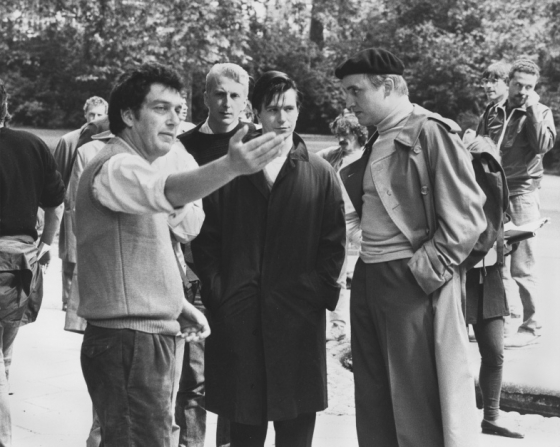Actor Anton Yelchin was killed Sunday when his Jeep Cherokee apparently rolled after he exited the vehicle and pinned him against a fence. Richard Shotwell/AP hide caption
toggle caption Richard Shotwell/AP
On first blush, the death of the young actor Anton Yelchin, who starred in recent Star Trek movies, seemed just a freak accident, but it might be connected to a known defect in his SUV.
Yelchin’s body was found pinned between his car and a fence. His Jeep Grand Cherokee had apparently rolled into Yelchin after he exited the car.
In April, Fiat Chrysler recalled 1.1 million vehicles equipped with what is called a monostable shifter. The system has been found to be more than a bit confusing to drivers. Instead of the shift lever resting in a sort of groove after it’s pointed to, say, park or neutral, the lever springs back to a default position.
It’s easy for a driver to hop out with the car stationary and not realize it’s still in drive. 41 injuries, 212 crashes and 308 reports of property damage have been linked to the phenomenon.
Here’s how FCA addressed the problem to dealers:
“The vehicles … deliver warning chimes and alert messages if their driver-side doors are opened while their engines are still running and “PARK” is not engaged. However, investigation suggested these measures may be insufficient to deter some drivers from exiting their vehicles without selecting “PARK,” so FCA US will enhance the warnings and transmission-shift strategy on these vehicles.”
The company didn’t say exactly what those enhancements would be.
In a statement to NPR, FCA spokesman Scott Brown said, “FCA US extends its most sincere condolences to the family and friends of Mr. Yelchin. The Company is in contact with the authorities and is conducting a thorough investigation. It is premature to speculate on the cause of this tragedy.”
The company says it has informed consumers of the problem. Recall notices were sent in the mail to consumers, the news media were alerted and NPR even did stories in several newscasts about the recall. Other news organizations also covered the recall.
The question is whether this busy actor checked his mail coming from Jeep.
The National Highway Traffic Safety Administration, the federal agency that governs recalls, requires companies to inform customers by mail. Dealers complain that state privacy laws hamper them from reaching out to consumers by phone. And when car makers mail notices they use car registration rolls to get addresses. So if a driver has moved and not properly re-registered a vehicle, the recall notice may go undelivered.
Then there is the question whether consumers even pay attention.
Rebecca Lindland with Kelley Blue Book says she’s not surprised that recalls go unnoticed: “The current look and feel of a recall notice is about as friendly as an IRS letter. They tend to be verbiage heavy, quite technical and not very user-friendly.”
To give you an example, here’s how FCA described the shifter problem. “The vehicles affected by this recall are equipped with electronic shift levers that return to the same position after each manipulation. Gear-selection is conveyed to the driver by multiple sets of indicator lights, not gear-selector position, and unless due care is taken, drivers may draw erroneous conclusions about the status of their vehicles.”
According to a study by Autotrader, 41 percent of respondents do not have recalled vehicles repaired because they do not believe the repairs to be necessary; 23 percent say they are too busy to deal with the recall repair. But the completion rate of recalls is higher than that. Dealers must inform customers when they come in for maintenance if their car is under recall. Therefore, a lot of recall fixes happen through no initiative of the driver.
There is a sense from drivers (even this car reporter) that we can assess how dangerous a recall is or is not.
“Consumers seem to have the attitude about recalled vehicles that if it isn’t broken, why fix it?” says Autotrader senior analyst Michelle Krebs. She says consumers don’t think the recall is urgent or necessary because they have not experienced a problem. In reality, Krebs says, “ALL recalls, by their very nature, are safety-related and should be addressed by taking them to a dealership for free repairs.”
Safety advocates say too much responsibility for fixing cars rests with the consumer. Advocates such as the Center for Automotive Safety are calling for much stronger reporting requirements for the car makers. They point to legislation enacted this month that only now makes it a violation of federal law for rental car companies to rent, loan, or sell defective, unsafe recalled cars unless the safety defects have been repaired. There is movement to inform consumers through in-car systems that communicate to consumers through the car itself.
Let’s block ads! (Why?)





